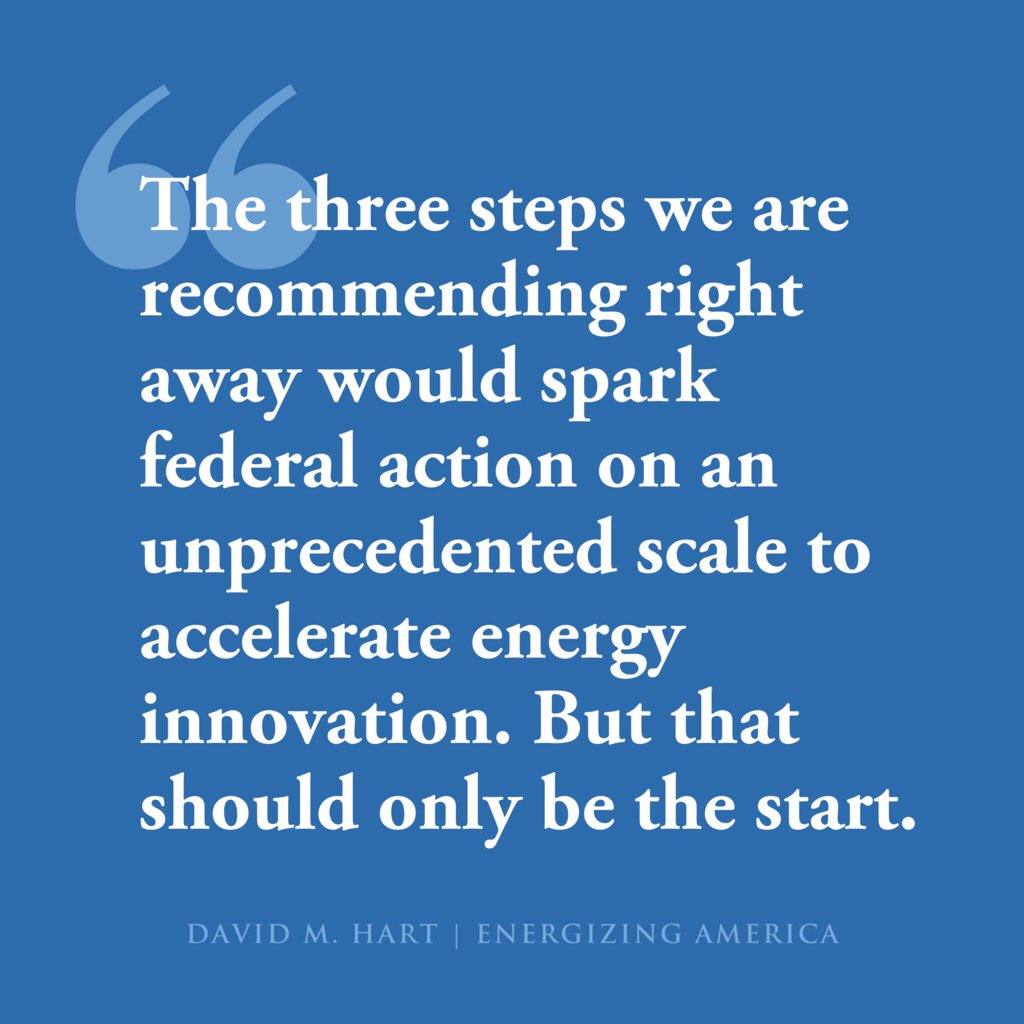Today, @ColumbiaUEnergy releases Energizing America w/@ITIFdc, a roadmap to kickstart a U.S. federal clean energy innovation policy agenda, increase federal funding for energy RD&D, decarbonize the global economy and address #climatechange: bit.ly/energizingamer….
In Energizing America, authors @vsiv @colin_cunliff @ProfDavidHart @CarbonWrangler & David Sandalow offer a detailed roadmap to dramatically increase U.S. federal funding for energy RD&D across ten Technology Pillars, elevating energy innovation as a core national priority 

Raising annual federal investment to $25 billion by 2025 can jumpstart private innovation and sustain one million jobs over the long run, investments that can speed clean energy transitions around the world and build advanced energy industries in the U.S.: bit.ly/energizingamer… 



Clean energy innovation has gained bipartisan support in Congress, but as @ColumbiaUEnergy @JasonBordoff points out: “The question for policymakers remains: how best to accomplish it? Energizing America offers the next administration and Congress a strategic framework.” 



.@JohnKerry, 68th U.S. Secretary of State, endorsed Energizing America as, "A plan to make the U.S. the world leader in clean energy innovation and rise to an existential challenge—creating exciting new jobs along the way." 

Explore our interactive report to learn why energy innovation is a critical national priority, and key to addressing #ClimateChange. Energizing America: A Roadmap to Launch a National Energy Innovation Mission: bit.ly/energizingamer….
Join us on September 23 for the global launch of Energizing America at #ClimateWeekNYC, headlined by Dr. Elizabeth Sherwood-Randall @LSRTweets and Representative @KathyCastorFL: bit.ly/energizingamer… #CGEPLive 

• • •
Missing some Tweet in this thread? You can try to
force a refresh








